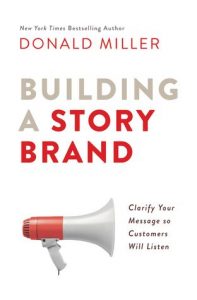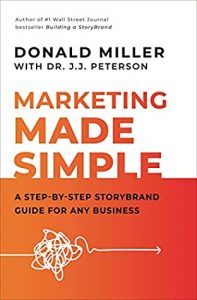Book Reviews: Storybrand and Marketing Made Simple
Editors note: This post contains affiliate links. If you click a link and make a purchase, we make a small commission. This helps us pay our writers, fuel our caffeine addiction, and keep the site going.
When I first heard of Building a Storybrand by Donald Miller, I thought it was a gimmick. The Amazon blurb described using narrative elements to connect with customers, which made as much sense as any other marketing technique. While reviews were generally positive, the negative ones noted that the author, Donald Miller, tried to sell you something the entire book. With that, I decided that I already had enough books in my Audible queue, and moved on.
However, a few weeks later when I was reading The Leader Assistant, Jeremy Burrows mentioned a vital element of Storybrand that helps with the mindset of an impactful assistant: You are not the hero. An effective assistant orients themselves as the guide in the hero’s journey, not the hero themselves. Burrows describes how in Storybrand, Miller repeatedly emphasizes that the biggest mistake that brands make is positioning themselves as the hero that has arrived to rescue a customer, rather than a guide to provide direction along their journey. This idea captivated me, so I picked up the audiobook.
About Storybrand
 Storybrand focuses on creating a clear story centered around your customer who plays the hero. Miller describes this as a framework, but essentially it is just a standard narrative structure. A character has a problem and meets a guide who gives them a plan and calls them to action. Their journey ends in success, avoiding the potential failure that was looming over them. Ultimately, the hero is transformed by the journey. This conflict, rising action, and conclusion will be familiar to anyone who has watched or read a good story, which is where its power lies.
Storybrand focuses on creating a clear story centered around your customer who plays the hero. Miller describes this as a framework, but essentially it is just a standard narrative structure. A character has a problem and meets a guide who gives them a plan and calls them to action. Their journey ends in success, avoiding the potential failure that was looming over them. Ultimately, the hero is transformed by the journey. This conflict, rising action, and conclusion will be familiar to anyone who has watched or read a good story, which is where its power lies.
What does this have to do with marketing, especially Smutlancing? When I think about the guide in the hero’s journey, I think of Obi-Wan in Star Wars, Haymitch in The Hunger Games, or Dumbledore in the Harry Potter series. The guides have been where the hero once was, and now have the knowledge and experience to share. While you might not feel this way, as a sex blogger you have likely overcome issues with kink, sex, and or relationships that others are having this very moment. Yes, you are still on your own journey, AND you can guide someone else.
Miller walks the reader through the Storybrand framework step-by-step in detail for most of the book. It gets a little annoying and sounds like a sales pitch when he repeats the phrase “Storybrand Brandscript” multiple times, but I found that the tools he describes are free, they just ask for your email. Yes, Storybrand will email you pretty often, so unsubscribe if you find they don’t add value to your life. I recommend using the online tools if you can. If you don’t want to give away your email though, you can certainly complete the exercises on a piece of paper.
Adding Marketing Made Simple
 The last section of the book consists of applying your ‘Brandscript’ in a marketing context. This was about 90-minutes in the audiobook. It described setting up your website, a short pitch, a lead generator, and two email marketing campaigns. After hearing this section of the book, I wished that it was extended into a whole book. I then found Marketing Made Simple, a book by the same author. It takes those five elements mentioned briefly in Storybrand and expands them out into full chapters.
The last section of the book consists of applying your ‘Brandscript’ in a marketing context. This was about 90-minutes in the audiobook. It described setting up your website, a short pitch, a lead generator, and two email marketing campaigns. After hearing this section of the book, I wished that it was extended into a whole book. I then found Marketing Made Simple, a book by the same author. It takes those five elements mentioned briefly in Storybrand and expands them out into full chapters.
That final section of Storybrand and the entirely of Marketing Made Simple provided the most value to me. While the Storybrand ‘framework’ helped me, I didn’t need as much hand-holding as the author seemed to expect. Perhaps my history of writing and interest in narrative structure gave me a background that Miller assumes people don’t have.
Should You Read Both Books?
If you only have time to read one of the books, I recommend reading Marketing Made Simple. While Storybrand is the foundation of Marketing Made Simple, Miller describes enough of the framework for the book to stand alone. The section on developing your website alone is worth the price of the book.
As an aside, if you’ve read these two books, you’ve basically received all of the information from their two-day marketing workshop, so don’t make the mistake I did and sign up for it expecting something new.
Take a closer look at the books mentioned in this review:
Building a Storybrand by Donald Miller
Marketing Made Simple by Donald Miller
Are there any other business books you’d like me to review and ‘translate’ to the smutlancing context? Leave them in the comments below!
